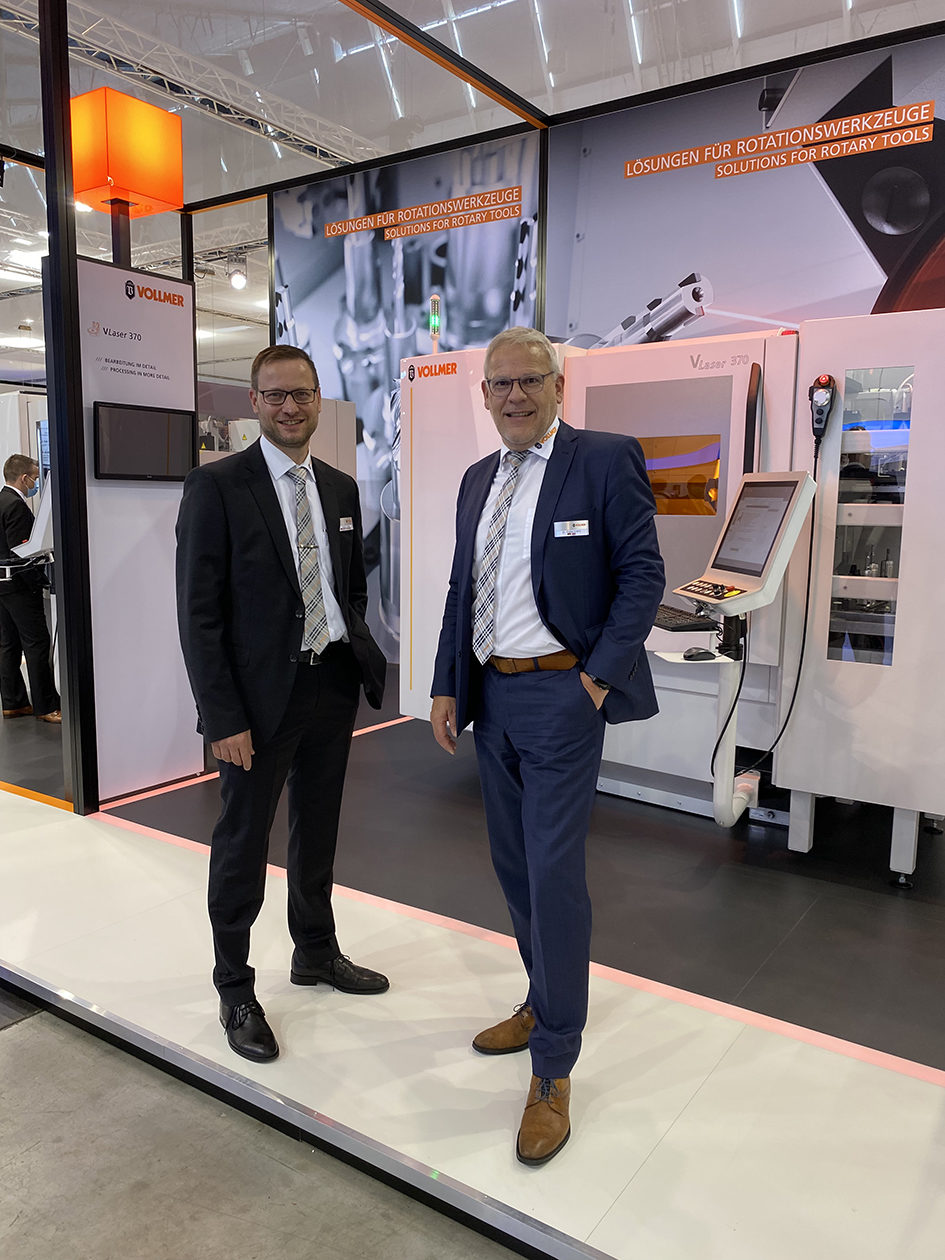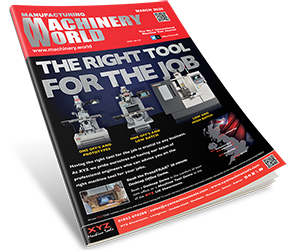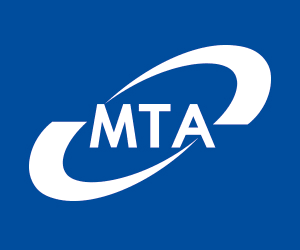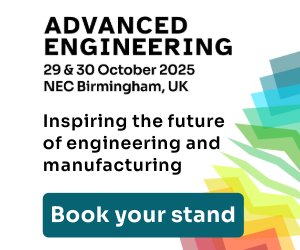The inaugural GrindingHub exhibition in Stuttgart from the 17th to 20th May proved to be an extremely successful event. Like many of the 370+ exhibitors at this new event, VOLLMER fully supported the VDW (German Machine Tool Builders’ Association) and Swissmem (Swiss Machine Tool Association) with the launch of the new show – something that was emphasised with the world premiere of no fewer than five new machines. We sat down with VOLLMER Managing Director, Jurgen Hauger at GrindingHub to discuss the exhibition, how the company has transitioned through the pandemic and also where VOLLMER has positioned itself for the future.
The very first GrindingHub exhibition saw 370 exhibitors from 23 countries fill three halls and 18,000sq/m of stand space at the Stuttgart Messe with more than 240 machines undertaking live demonstrations. This drew 9500 visitors (40% from overseas), making the exhibition a resounding success. So, where better to start than to ask Jurgen Hauger his viewpoint on the new exhibition.
“As you can see here in Stuttgart, it is a great location and we have had customers flying from around the world. On one day of the show, we had customers fly in from the middle of Italy early in the morning – they flew at 6am, arrived in Stuttgart by 8am, had some breakfast and came to the show at 9am. By the evening they were back home in Italy. This demonstrates the perfect infrastructure with regards to access to the airport, highways and also car parking. Next year, the access will improve further with a high-speed train line stopping two minutes away from the exhibition halls.”
“It is a new show, but the basis for this exhibition could not be better as all of the exhibitors know the fairground; and with the VDW and Swissmem, as show organisers working with the Messe Stuttgart – it is extremely well organised. This year, the Messe has another 60 shows here in Stuttgart and this professionalism is clear to see. Looking to the future, the infrastructure allows us to add more halls if they are needed as the infrastructure is great.”
When asked if GrindingHub is drawing more overseas visitors than the previous GrindTec exhibition in Augsburg, Mr Hauger says: “To put it simply, this will be the new centre for grinding exhibitions. Whatever you want to grind, if it is a tool, a flat part or other workpieces – this will be the show! The world was ready for such a show 20 years ago when GrindTec started, so this is a promising alternative to the GrindTec exhibition with all the positive feedback. This is not just my opinion, we are talking with all our industry colleagues and they are all saying the same.”
Highlighting the launch of new machines as a ‘statement of intent’ concerning VOLLMER’s commitment to the GrindingHub show, Mr Hauger confirms: “We have launched five new machines at the show and we also have a new booth concept. The new booth is how Vollmer is embracing a new perspective after the pandemic. Following Covid, we are now really starting to show the five new machines and also show to the market our full line of leadership tools. We wanted to do this two years ago but unfortunately, it was not possible. Now, we have the full line with wire and disc erosion and we also have the grinding process and laser process. So, we really can offer the full range of technology with regard to the customer’s needs – unlike some market companions that just have one or the other of the before mentioned technologies. This allows us to look at the customer application, then assess and provide the right process and technology for whatever the customer needs, we are ready.”
The Future Is Digital
A key technology that VOLLMER has been working on is the Industry 4.0 (IoT) gateway and its V@dison (digital solutions) platform. The V@dison suite is already enabling customers to reduce downtimes and identify faults before they occur with predictive maintenance. It is also maximising system availability and analysing and evaluating processes to deliver the utmost transparency throughout the manufacturing cycle – and this is just the start of the journey. Alluding to this, Mr Hauger says: “With regards to our digital platform V@dison, it will take a long, long time before VOLLMER will profit from this concept. We are making significant investments, but the issue is that in the future, you will not sell machines without digitalisation because this will be a ‘must have’. This is why we are investing significant resources in this area with our digitalisation department that is directly linked to the management team because it is so important for the future of our business.”
“The V@dison platform will overlap all of our technologies such as connection with all of our ERP systems, so we have to have the main protocol languages such as UMATI, MT Connect, OPC UA and so on, as standardised interfaces. This will enable our gateway to effortlessly exchange data between machines, systems and customer applications. This encompasses not just primary machine processes but also all related servicing with Oculavis and Visual Instruct/Visual Support that will help the customer.”
With the V@dison platform undergoing consistent evolution and growth since the concept’s inception in 2019, the technology was fully implemented and introduced to the industry in the first quarter of 2020. Discussing how this positioned VOLLMER upon entering the pandemic, Mr Hauger says: “Digitalisation is a new tool for the customer and the pandemic situation was unforeseen. In my opinion, the pandemic boosted everything on the digital front as you couldn’t do anything else. You could not send service technicians to China, Australia or other countries where there was no possibility to travel. So, these high-end tools give customers a completely different approach and weight.”
“A very big benefit during the height of pandemic is that we were able to undertake final acceptance and commissioning of machines with customers via Visual Support and we have done direct training and demonstrations via visual instruct for the customer. Without the digital platform, we would not have been able to show the customers what was possible. Our digital suite was fully operational at the start of the pandemic and there is no doubt this gave VOLLMER several advantages whilst also adding value for our customers. V@dison is not saving VOLLMER money or resources, it is saving the customer money. Of course, if we have to send a service technician, the customer has to pay for this service unless the machine is under warranty.”
Looking at the foundation of the V@dison platform and its evolution, Mr Hauger says: “We are 100% SAP-based as an ERP system and we have to ensure that we do not have too many different systems within our company. What is possible with SAP is that we can use this system, but we also need additional systems like Oculavis, which is part of our Visual Instruct/Visual Support system. We have to work out how to combine the technology from our machines and bring it to the customer’s side. A very important step forward is our IoT gateway, which is more or less a translator that is collecting data from the machine and converting this data to the right language and then providing it to the customer within their software structure.”
“To achieve these tasks, we have restructured our IT and digitalisation department a few years ago and are now able to further optimize customer orientation. These experts are continually looking at how they can bring all these information structures together into a uniform structure for our customers. This will streamline and further simplify processes for the customer.”
The speed of industry evolution has picked-up pace with the onset of vehicle electrification and the pandemic as two examples, Mr Hauger comments on VOLLMER’s position during this period: “VOLLMER was in a relatively strong position during the pandemic, as we work in both the wood and metal industry. The metalworking industry was a disaster as all the large companies either shut their businesses temporarily or reduced their shifts. However, the woodworking industry remained at a very high level with investment in the sawmill and construction industries remaining at such a high level throughout the pandemic. If you look at our technologies, our products for producing wood cutting tools is 50% of our business model and this really helped through the pandemic.”
Looking at the wider industry: “Looking at the desruptive transformation regarding the car industry and the demise of the combustion engine, there will be a mixture of technology in the future, and you cannot say at present that in five years there will be one definitive power source. One of the big problems is where will the energy come from. Yes, it comes from the plug, but you have to generate the energy, so in my opinion, it would be wrong to say that electrical vehicles are entirely the future – there are also hydrogen vehicles, synthetic fuel-driven vehicles as well as hybrid technology.”
“In Germany and other developed countries, we have the infrastructure to power electrical vehicles, but what about in Africa and other nations that are less well developed with their infrastructure. We cannot think that we have to evolve in a particular way without a global perspective. For example, in April, about 55% of energy consumption in Germany was fuelled by renewable technologies and we may have to think that as a country, we should run in this direction, but as a global contributor, Germany only contributes just over 1.9% of CO2emissions – this will not solve the global warming crisis.”
With all manufacturing industry sectors facing different challenges that range from geopolitical issues and technology evolution through to the management of circumstances created by the pandemic, material technology, automation, skills shortages, remote working and much more; Mr Hauger comments on the particular issues faced by VOLLMER customers and how the family-owned Biberach company is supporting its customers in the face of ever-increasing change. “When it comes to solving the key issues for our customers, the best machine for the customer will always be the one where you throw in a block of material, hit the big green button and everything will be done automatically. This will always remain the utopian dream. At VOLLMER, what we have to ensure – and it is maybe why the development of laser technology took us longer than we planned, we have to have machines that are easy to use. Like all our machines, we need to develop and prove concepts where the customer can be confident that it is an easy machine to use, something that is operator friendly with a great HMI (human machine interface) that will help the customer take a step closer to this utopia.”
“Another area we have to concentrate upon is the ‘complete solution’. So, if a customer has a particular tool they want to produce, we have to be able to provide a complete process. This may include the complete programming for the tool, the grinding wheel selection, the machine parameters and even the automation – this is something that we have been providing some customers with for many years. This complete range of service support can help to take the skill out of the process for the customer. This is a very important point for many customers, as they may have a skills shortage, and at Vollmer, we have the skills in house to support our customers.”
The Future of VOLLMER
During the sit-down with the VOLLMER Managing Director, the digital roadmap has been identified as a key strategic point – but what about the overall future direction of the company? “We have a new headquarters planned for construction, which is unfortunately on stop at present. But, we have to continue with our plans as we have a business structure that is not getting any younger. When our building project stopped in March 2020 due to the pandemic, we already started construction of the energy house with the transformers – but since the full extent of the pandemic became clear even before construction officially started in April 2020, we put construction on hold.”
“The site is a greenfield project that will cover 100,000m² of land near Biberach airport and the facility will commence with the commissioning of the new site in the next couple of years. The new building will be a completely CO2 neutral facility. It will utilise both solar panel energy and it will draw geothermal energy from underground with holes drilled up to 200m deep into the ground below.”
The facility will be home to the company’s most valuable asset, its people. Discussing this, Mr Hauger says: “We have 78 apprentices at the moment, and at Biberach, we have a total of 580 staff, so this demonstrates our social responsibility commitment with 13-14% of staff at our headquarters being apprentices. This is completely outstanding! We are dedicated to the training and education of young people, it is one of the main targets of our Sieglinde Vollmer Foundation. We have to ask – what is the asset of our company? Is it the machines or the infrastructure, no – it is the people within the company. Our people are our real asset and without our team, we would be nothing. You can have the best machines and the nicest buildings, but without the right people – you can forget it. This is why we are investing so much money and resources in this area.”
Adding to this important point, Mr Hauger alludes to the very first VCampus event that took place from the 22nd to the 24th of June: “What we have done this summer is joined 120 apprentices together from German-speaking countries and provided a three-day on-campus event. So, our customers sent their apprentices to our training camp where their trainees were educated by experts from universities and mechanical schools and they taught the apprentices and brought them to a higher educational level. We also brought in the VOLLMER trainers, not just the apprentices but also their trainers from the company to talk about new approaches to teaching young people. This event was be paid for by VOLLMER as a ‘value-adding’ exercise for our customers where we are helping to improve the skill level of apprentices that work for our customers in German-speaking areas such as Austria, Switzerland and of course Germany. The customer only had to pay the travel costs for the apprentice to travel to Biberach – when they were on-site, the hotel, food and other costs were covered by VOLLMER.”
Comparing the modern apprenticeship programs from 20 years ago, Mr Hauger says: “The landscape of our training programs has evolved with the business. So we now have more IT apprenticeships. Also, it is no longer just about how to file or machine a piece of metal. To keep our machines at a very high level with the software and CNC controls, our apprentices have to be highly skilled. The apprentices spend 1 to 2 days each week at school with the rest of their time at VOLLMER and this combination of theoretical and practical work is what enables them to grow.”
On a final note, “We will be opening our 15th subsidiary soon and this will be located in Bangkok Thailand. This will be our Asia-Pacific facility that will serve the entire Asia-Pacific market and this will include Taiwan, Vietnam, Thailand, Indonesia, Singapore and the south-east Asian markets. What we are finding is that many companies are now looking for alternatives outside China. This is because what we have seen during the pandemic situation, having just one manufacturing hub in China can be very challenging. If something happens in China, like the country being locked down during the pandemic – you will not be able to get products out of there. This is why many companies are diversifying to other Asian economies, and not just China.”







